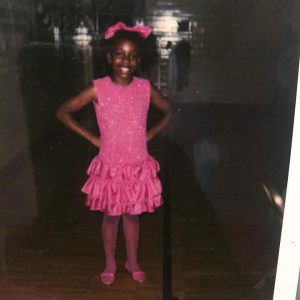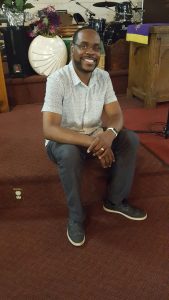Rapper Kodak Black created a ripple of controversy on social media when he stated he doesn’t date black woman, when does the self-hatred stop? As a millennial who listens to his music it’s heartbreaking to continue to hear that black men don’t want black women. This continues to create a fundamental since of self-hatred in our music and hip hop world.
When do we as Americans acknowledge that yes we come in all shapes, sizes and complexions that black beauty matters? When do we lift up those who feel left out? Overlooked?
Today we still live in a world where our black identity (culture) is miss appropriated by a society that still doesn’t accept that “Our Black Is Beautiful”. In contrast magazines, beauty editorials and blogs are quick to praise our white counter parts who manipulated their bodies to have fuller lips, hips, bigger butts, cheek bones and even hair styles of black women. While little black girls grow up trying to understand what beauty is, what does black beauty look like, are often left confused and they’re left to these images seen on TV or magazines to shape the meaning. In turn you have men as well as women lifting up our white counterparts and adoring them for imitating the beauty of a black woman while putting down the actual black woman herself.
In the 1940’s, Drs. Kenneth and Mamie Clark in their famous doll test conducted a series of experiments on the psychological effects of segregation on American children. According to a report by the N.A.A.C.P. “Drs. Clark used four dolls, identical except for color, to test children’s racial perceptions. Their subjects, children between the ages of three to seven, were asked to identify both the race of the dolls and which color doll they prefer. A majority of the children preferred the white doll and assigned positive characteristics to it. The Clarks concluded that “prejudice, discrimination, and segregation” created a feeling of inferiority among African-American children and damaged their self-esteem.”
The studies concluded that segregation impacted the children to internally hate themselves and their black skin. Since then more tests, reports, and studies post-civil rights era continue to resonate. In more recent studies, young children were still selecting the white doll, white model or white figure which in their minds represented beauty, respect and an ideal role model. The brown bag test was another example of discrimination and used to deny black privileges to social intuitions such as churches, sororities and fraternities.

Love Thy Black Self
As a girl growing up in Englewood, I remember reflecting on what doll I would choose to play with. I didn’t have a choice because my mother reinforced my beauty and ensured that I had an array of black dolls. I don’t know if my mother was familiar with the Clarks study. I do know she insisted on me knowing that “My Black Is Beautiful” and I was a “Beautiful Brown Baby Doll” was a constant affirmation. My mom encouraged me early to embrace my beauty. She was determined to make sure I knew that white women were not the standard of beauty for little black girls growing up on the South Side of Chicago.
My mom, a single parent, gave me no choice but to appreciate my sandy brown hair, statuesque physique, dark complexed skin, full lips and hips throughout my adolescent years. I was always engaged in enriching activities such as African dance, modern dance, cheer-leading and Girl Scouts of America. I had teen-age insecurities, I was the tallest in my class, the youngest in my class and I was teased on everything from the complexion of my skin to the texture of my natural hair. I struggled emotionally while in High School. I wanted to change my appearance often. However, I remained steadfast because my Mom’s emphasis on “My Black is Beautiful” was echoing in my soul.

Rashanah and Her Mother
My struggle with a poor self-concept and esteem associated subconsciously with a “white” standard of beauty, despite having a “Strong Black Female Mom” as a role-model, led me to start mentoring young girls within my community and church. I was determined to make sure young girls coming up behind me regardless of being light skinned, dark skinned, tall, short, big or small they would know that beauty came in all forms.

Rashanah 9 years old, Girl Scouts Father-Daughter Dance
As a teen I heard common phrases: “If you’re light you alright, If you’re brown you stick around and black you step to back” was very disheartening.
Defining Beauty
Beauty is defined by what we watch on the TV and see in the news. The standard of beauty in America is often defined by what we also see on the newsstands in the grocery stores. The images of white reality stars such as Kim Kardashian are the overarching theme.
I didn’t recognize my mom was empowering me to be a beautiful black woman inside and out. She made sure to engage me in all aspects of activities that spoke to beauty. If I were not in: African Dance, learning the importance of body movement; cheerleading, learning the importance of teamwork; and Girls Scout learning survival skills I would not be the woman I am now.
My mother’s affirming my black identity beauty facilitated a sub-consciousness interest in me of how beauty looks via dance, service and cheerleading. This inspired me to participate in pageants as a young woman and take the leap of faith to express my beauty in competition.
Who Dares Step Up To The Pedestal of Beauty:
In 2017, it takes much courage, faith, tenacity, and inner beauty for whomever dares to stand on a pedestal and assert their beauty in a culture of body shaming and aspirations to achieve perfection. The beauty to see one’s self in the image of God and proclaim “I Am What Beauty Looks Like” in a society in which beauty is defined historically by images of Farrah Fawcett, Bo Derek, presently Kim Kardashian, Paris Hilton and Kylie Jenner.
It wasn’t until my mom showed me gorgeous pictures of Dorothy Dandridge, Beverly Johnson, Iman, and Janet Jackson that revealed to me what beauty and elegance looked like.
“Growing up seeing my cousins, sisters, girlfriends, I witnessed the challenges of black girls struggle with self-concept, worth, image and esteem because of their body, length of hair, complexion, etc. Rearing two girls coupled with educating hundreds more as a school principal and pastor I always remained a bit sorrowfully heavy because of the pain that black girls experienced about trying to fit into a rubric of beauty created by the media and the likes of Kardashians and Hiltons. The irony today when you watch shows like Real Housewives of Atlanta, Love & Hip Hop and other reality shows depicting self-hatred aligned to a white standard of beauty. These sister girls spill out a venom towards one another that reinforces the negative stereotype by beating down one another and criticizing one another’s hair, skin, and body image, it is a pain that haunts millions of black women in our communities today.” says Pastor K. Andre Brooks of Greater Saint John AME Church.

Rashanah Baldwin, Ms. American Elegance Woman 2016-17
(American Elegance National Pageant)
In 2017, I decided to step on this pedestal to take opportunity to compete national to become the national Ms American Elegance Woman. I did this knowing that my own family, friends and community would minimize and look down on my efforts and find ways to tear me down because of their own ugliness associated with self-hatred based on a with white supremacy psychological under pinning.
“We must salute and support modern American Super Black Woman who are courageous enough to step out on the stage of white supremacy and redefine the standard of beauty.”, states Pastor K. Andre Brooks.
The Role of Pageantry
Many remember Vanessa Williams the first African American to win the Miss America Beauty Pageant in 1984. This was record breaking and a huge win for many around the country. However as gorgeous as she is, she still had the blue eyes, sandy brown hair and was fair skinned. As we celebrate her as a black woman, she was far removed from the standards of black beauty because she was a close representation to the whiteness the world wanted to see for a beauty queen. Part of the challenge with black girls with their interpretation with their blackness is the association with the standards of beauty often times correlated with whiteness as possible. Vanessa Williams, like many fair skinned African American woman often faced a double-edged sword, for they too were teased for being fair skinned by their own counterparts while at the same time being lifted up by whites.
However the image hangs on the theory closely related with the lighter they are the prettier they are and this leaves our little girls with the dichotomy of blackness.
Mentoring and Monitoring Beauty
The Illinois American Elegance Pageant, a division of the American Elegance Pageant, embraces all shapes, sizes, ages and certainly does not take race into consideration for participation. According to Lauren Ransom, State Director for the Illinois American Elegance Pageant “we celebrate women of all ages, sizes, and ethnicity showing the many ways women are BEAUTIFUL!”
I’m excited to continue the mantra “My Black Is Beautiful” through the young girls mentoring initiative I oversee called “Tea With A Queen” and the newest Girl Scouts Troop I launched in the Summer of 2017 Troop #25672. These initiative covers a variety of topics while providing leadership and mentoring to young girls across Chicago. The work and commitment to youth mentoring and women empowerment continues!

Rashanah and The Englewood Princesses


























